Indexed In
- Open J Gate
- RefSeek
- Hamdard University
- EBSCO A-Z
- OCLC- WorldCat
- SWB online catalog
- Publons
Useful Links
Share This Page
Journal Flyer
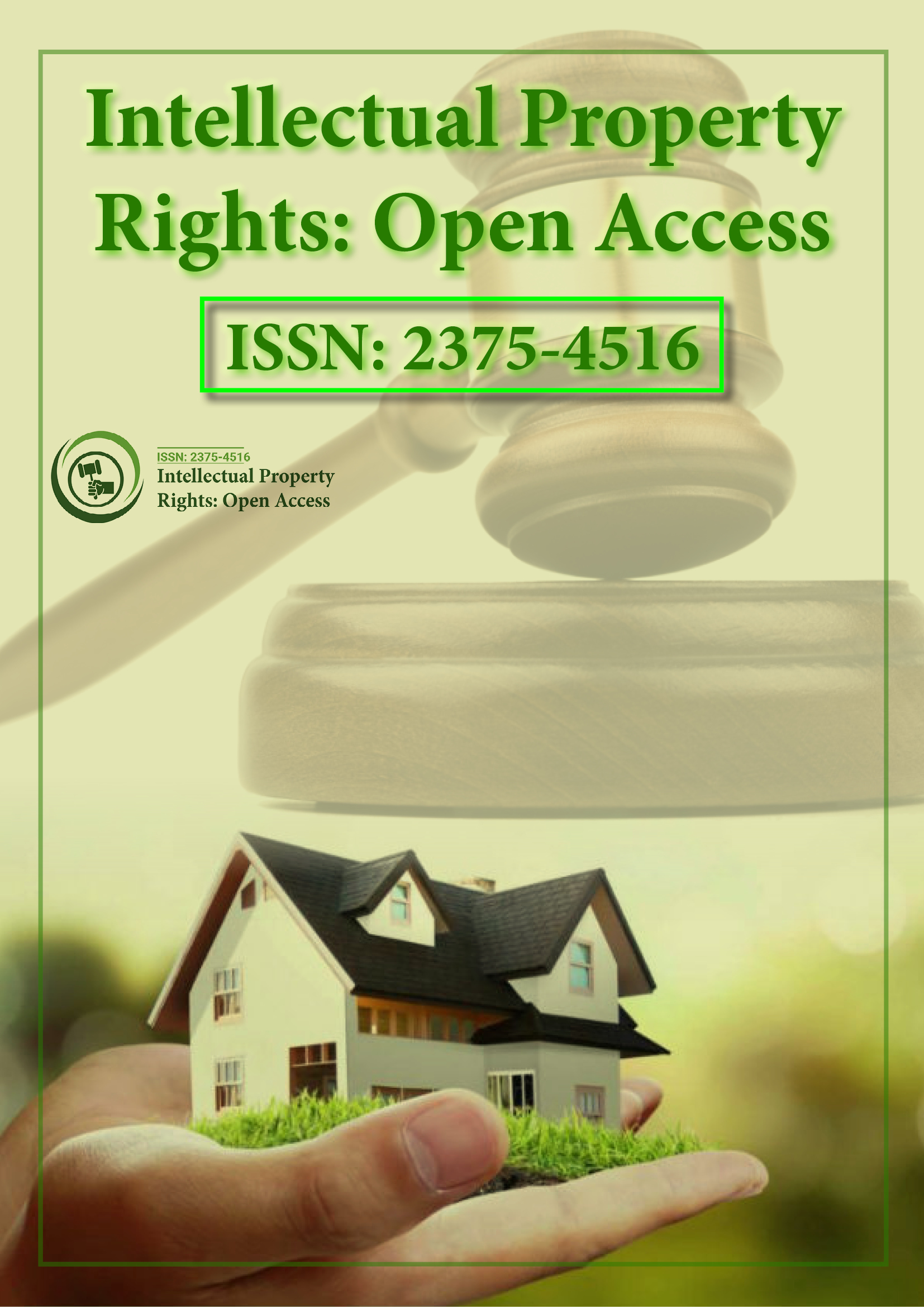
Open Access Journals
- Agri and Aquaculture
- Biochemistry
- Bioinformatics & Systems Biology
- Business & Management
- Chemistry
- Clinical Sciences
- Engineering
- Food & Nutrition
- General Science
- Genetics & Molecular Biology
- Immunology & Microbiology
- Medical Sciences
- Neuroscience & Psychology
- Nursing & Health Care
- Pharmaceutical Sciences
Review Article - (2023) Volume 11, Issue 2
Mobility as a Basic Human Right: A Situated Understanding of Mobility among Persons with Physical Disabilities in Rural Talensi District, Ghana
Lawrence Opoku Agyeman*Received: 13-Jan-2023, Manuscript No. IPR-23-19577; Editor assigned: 16-Jan-2023, Pre QC No. IPR-23-19577 (PQ); Reviewed: 30-Jan-2023, QC No. IPR-23-19577; Revised: 17-Apr-2023, Manuscript No. IPR-23-19577 (R); Published: 24-Apr-2023, DOI: 10.35248/2375-4516.23.11.226
Abstract
Mobility is a requisite for accessing social, economic, cultural, and political development. The mobility obstacles in cities have been well-documented, leaving rural areas with few studies on critical challenges related to movement in both the natural and built environment. This study then sought to fill this gap. Snowballing was used to select 75 persons with physical disabilities in the district for a household survey. Face to face interviews were conducted with the association of persons with physical disabilities, and the officers from the department of social welfare to provide further insights into the findings. The data gathered were coded, categorized, and analyzed to identify patterns to create an understanding of the mobility barriers among persons with physical disabilities. The topographical features of the district, consisting of stones, rocks, valleys, hills, and slopes, have made maneuvering extremely difficult for people with disabilities. The built environment, such as small entrances and bad roads, and high ramps have created mobility barriers for people with disabilities. The presence of native stairs and smaller gates forced people with disabilities to park their wheelchairs outside their homes. The lack of a sidewalk puts disabled people at high risk of accidents as both shares the same road with vehicles. The study recommended that rural homes and roads be designed and built to make their disability responsive.
Keywords
Mobility obstacles; Person with disability; Rural Talensi district; Geological setting; Ghana
Introduction
Mobility is an essential requirement for human well-being and thus cannot be bargained for United Nations, et al. Mobility is defined as the ability to walk safely and freely, and it is a prerequisite for accessing social, economic, political, cultural, and physical needs. Mobility disabilities can be inborn or acquired Kwame, et al. and the built environment is critical for people with such disabilities. Nagi, et al. defined disability as an individual's inability to perform socially assigned responsibilities expected of them within a given socio cultural context. Disability refers to obstacles encountered while working, such as impairments, activity limitations, and participation constraints.
Several variables, including starvation and disease, health issues, environmental risks, workplace and transportation accidents, and civil conflict, contribute to disability Barnes, et al. There are currently more than 600 million people with disabilities in the world, with 80 million of them living in Africa and 400 million in developing nations [1]. According to the 2004 global burden of diseases report, about 978 million people, or 15.3%of the world's population, have some form of disability. Literature shows that about 40% of Africans are believed to have a disability, including school age children.
The political philosophy that emerged in the 20th century advocated for using government assistance or medical care to treat disability Cohen, et al. Sen, et al. On the other hand, social theorists started to view disability as a source of group identity, as well as oppression and discrimination, much like race or gender. Moreover, biomedical and other practical applied ethicists have been interested in assisting decision-makers in developing and interpreting new legal and regulatory frameworks that place a strong emphasis on "disability". Invoking the legal definition of racial minorities, people with disabilities are a distinct and isolated group. According to John Swain, et al. having a disability is not a problem or just a "personal tragedy," but rather a unique way of relating to and understanding the world.
Physical disability is related to accessibility and movement restrictions, the incapability to use limbs and the body constructively to move from one place to another due to palsy, stiffness, pain, and loss of a part. Individuals with disabilities are usually marginalized and discriminated against. Conventional literature has acknowledged that People with Disabilities (PWDs) have significant physical obstacles when trying to access social, economic, and political needs [2]. This incident suggests that efforts must be made to remove obstacles, both physical, social, and economic that prevent PWDs from participating fully in society.
According to Mahmoud, et al. persons with physical disabilities are unable to access their social, economic, political, and cultural needs because of the non-disability-responsive designs and construction of dwellings and public spaces. The implication is that individuals with disabilities are unable to access resources and initiatives that will enable them to fulfill sustainable development goals.
The mobility obstacles in cities have been well-documented Clake, et al.; Worth, et al.; Kwame, et al. leaving rural areas with few studies on critical challenges related to movement in both the natural and built environment. This study then sought to fill this gap. Against this background, the research question is; how do nature and the built environment impede the movements of persons with physical disabilities in rural Talensi district? The research is divided into five sections. The first section provides an overview of mobility and disability. The second part examines the conceptual model of mobility. Section three delves into the methodological approach, section four presents the findings and discussions of the study and the conclusions and recommendations are in the last section [3].
Literature Review
Mobility is essential to human well-being, and cannot be negotiated. The difficulty or inability to walk or move from one location to another to carry out a daily routine is referred to as mobility impairment. Mobility refers to the ability of a person to move around freely without the support of another and not get hurt or harmed in the process, either by walking alone or using a device or transportation, to reach their destination.
Disability refers to impairments, limitations, and restrictions in activities. Disability is influenced by trends in health conditions and trends in the environment as well as traffic crashes, natural disasters, conflicts, diet, and drug abuse. Disability describes the conditions such as paraplegia, deafness, blindness, diabetes, autism, and epilepsy, depression. The term encompasses a wide range of conditions, including the congenital loss of a limb or sensory function, accidental loss of a limb, progressive neurological diseases like multiple sclerosis, chronic diseases like arteriosclerosis, the inability to perform certain cognitive tasks, like remembering faces or adding numbers, or the limited ability to do so, as well as psychiatric disorders like schizophrenia and bipolar disorder. The International Classification of Functioning, disability, and health (ICF) defines disability as impairments, activity constraints, and participation restrictions GSS, et al.
Physical disability is related to accessibility and movement restrictions, the incapability to use limbs and the body constructively to move from one place to another due to palsy, stiffness, pain, and loss of a part. Individuals with disabilities are usually marginalized and discriminated against. The built environment is defined as buildings, spaces, and products that are created by society and are increasingly recognized for human development Jackson, et al.; Salam, et al [4]. The built environment describes how human made structures are designed, constructed, and managed. It consists of places and areas that people have built, rehabilitated, or created, such as parks, roads, and buildings.
Models of disability
To foster a greater understanding of disability, it is crucial to comprehend the various models of disability. Among other frameworks, the religious, medical, and social models of disability offer opposing ways of thinking about disability. In reality, most organizations adopt a hybrid of the social and medical models to illuminate infirmity.
The spiritual or religious model of disability
The Judeo-Christian tradition embraces the moral or religious model of disability, which is the earliest model of disability Letsosa, et al. The religious view of disability saw it as god's retribution for some sin (or possible sins) the person may have done. Infirmities result from disobedience to societal morality and religious teachings that forbid engaging in a particular activity Henderson, et al.; Letsosa, et al. According to Retief and Letsosa, et al. this paradigm is predicated on the idea that the punishment is for an act or acts of transgression against prevailing moral and/or religious tenets. The concept is that actions of transgression against fundamental rules and regulations are punished [5].
Any sin done by a person's parents or ancestors is likewise taken into consideration as a potential factor in that person's infirmity Henderson, et al. According to Black, physical recovery can redeem this kind of impairment. Although it is still prevalent in some theological circles that most theologians reject the moral and or religious concept of disability Creamer, et al.; Yong, et al.; Swartley, et al. PWDs in these communities are frequently neglected, abandoned, or sometimes murdered as infants Anderson, et al.
The medical model of disability
The medical or biomedical model of the disability first appeared in the realm of medical science in the middle of the 1980’s. Disability, according to Olkin, et al. is a medical condition that is ingrained in the person. It is a physical system weakness or failure that is fundamentally aberrant and diseased. People with disabilities are expected to take advantage of the wide range of services that are available to them and to spend time acting as patients or learners who are assisted by qualified experts.
The medical model of disability, which defines it in a fundamentally negative sense, is known as the "personal tragedy" paradigm. Disability is viewed as being inherently bad, and pitiable, "a personal tragedy for both the individual and her family, something to be prevented and, if possible, remedied". This model suggested that addressing medical infirmity will give a solution to the disability. The medical model focuses on the impairment and what can be done to provide special services to disabled people. However, this model ignores the environmental and social obstacles that caused disabilities [6-8].
The social model of disability
Due to the shortcomings of the medical model of disability, the social model of disability was created. According to the social model of disability, impairments are the outcome of social barriers, environmental, attitudinal, and institutional, that prevent people with disabilities from participating fully in society. The social model of disability, according to Mcewan, et al. is predicated on the idea that all technical and environmental solutions are accessible to everyone.
The social model of disability Oliver, et al. as cited in Retief and Letsosa, et al. emphasizes the necessity to concentrate on the social components of disability, particularly how "the physical and social surroundings impose constraints onto certain types of persons." The social model of disability is predicated on the notion that disability is fundamentally a socially created phenomenon. UPIAS places a strong emphasis on the value of social dimension in its definition of disability. The social model seeks to encourage societal social inclusion. It acknowledges that attitudes toward people with disabilities erect needless obstacles to social inclusion and offers proactive solutions to overcome these obstacles.
Disability in Ghana
In Ghana, around 3.1% of females have disabilities, which is higher than 2.9% of males. Rural residents outstrip urban residents in terms of people with disabilities. Physical disability accounted for 25.4% of all disabilities, with sight or visual impairment accounting for 40.1% [9]. The lowest percentage was 13.7% for speech impairment. The available literature depicts various types of disability Table 1 in the district. Roughly 87.1% of the population with disabilities in the district lives in the periphery zones.
| Type of disability | Percentage |
|---|---|
| Sight | 42.8 |
| Hearing | 22.3 |
| Physical | 18.4 |
| Speech | 14 |
Source: Ghana statistical service, 2012
Table 1: Types of disability in talensi district.
Ghana has signed various international agreements including the convention on the rights of PWD and the African decade of the disabled persons. Although the goal of these agreements is to protect the fundamental freedoms and human rights of all PWD and to promote and respect their inherent dignity, PWD in Ghana continues to face various forms of discrimination. In Ghana, the persons of disability act 2006, act 715, and the Ghana national disability policy were enacted to protect people with disabilities from discrimination in public and social life. This has been described as a step forward in freeing people with disabilities from social segregation.
The Civil Society Organizations (CSOs) and the Ghana Federation of the Disabled (GFD), the national umbrella organization for people with disabilities, joined the fight for the rights of people with disabilities, including members such as the Ghana Association of the Blind (GAB), the Ghana Society of the Physically Disabled (GSPD), Ghana National Association of the Deaf (GNAD), Society of Albinos Ghana (SOAG), Parents Association of Children with Intellectual Disability (PACID) and Share Care Ghana (SCG).
Methodology
From the perspective of epistemological belief, knowledge was co-constructed with participants with disabilities in rural areas of the study communities. The beliefs and values of people with disabilities were highly respected. The study assumed that there is one real truth to be discovered or that there are multiple realities based on different perspectives of beliefs and knowledge of participants with disabilities in rural areas of the study localities. The study employed a sequential explanatory design to explore the research questions. The research design establishes the parameters for data collection and analysis. Data are collected and analyzed in a sequential explanatory design to reflect both qualitative and quantitative evidence Agyeman, et al. [10].
A preliminary investigation was done to be conversant with the mobility challenges of PD in the Talensi district. A visit was made to the Department of Social Welfare (DSW), the development planning unit, and the Association of Persons with Disability (APD) to collect primary data and establish a rapport for the subsequent data collection exercise. Before the primary data collection process, secondary data on mobility among physically challenged persons were reviewed to identify the critical variables to be analyzed in this study. Secondary data were drawn from peer-reviewed articles, books, reports, published dissertations, institutional reports from organizations affiliated with the association of persons with disabilities, and other relevant materials that helped the study provide insights into the study.
The primary data process begins with a survey to ascertain the demographic characteristics and observe the household characteristics of persons with physical disabilities in the selected communities and further select PD for the structured interview. Due to the lack of a database for PD, snowballing was used to select PD in the selected communities. A qualitative approach is suitable to discover and identify variables that provide a rich understanding of people's thoughts, behaviors, and actions Creswell, et al.; Agyeman, et al [11-13]. Face to face interviews were conducted with the Association of PD, the Talensi district assembly, and the social welfare office to provide further insights into the findings. The interview responses were read severally to identify the key variables for analysis. The data gathered were reduced, coded, and categorized to create a logical chain of the mobility barriers among PD in the study area.
Before data collection, ethical clearance was sought from the school of medical science, Kwame Nkrumah University of Science and Technology (KNUST). All respondents were informed either written or verbal consent was obtained from them. Individual respondents were asked to sign or thumbprint a written informed consent form. Participants who were not comfortable with signing or thumb printing were allowed to give verbal consent. Participation was voluntary, and one was allowed to withdraw anytime one wanted. Confidentiality was maintained using number identifiers on audio recordings, transcripts, and interview notes.
Results and Discussion
Characteristics of respondents
Age of respondents: From Table 2, 75 respondents, accounting for 29%, are in the 15-30 age range. Likewise, 48% of respondents fall in the 30-40 age groups. The remaining 23% fall in the age group of 40 and over. The majority of respondents are between 30 and 40 years old. This shows that most of the people with physical disabilities in the district were young people.
| Age | Percentage |
|---|---|
| 15-30 | 29 |
| 30-40 | 48 |
| 50 and above | 23 |
| Total | 100 |
Source: Field survey, 2020
Table 2: Age of respondents.
Gender of respondents
Disability is predominant among females WHO, et al.; Titumir, et al.; Singal, et al.; and Naami, et al. identified a pattern in the gender distribution of people with disabilities in northern Ghana. Naami, et al. further argues that women have more PD than men across all age groups. The gender distribution of people with disabilities is a key consideration when planning different responses to mobility problems faced by people with physical disabilities [14]. The empirical data Table 3 shows that 44%of the respondents were males and 56% were females. This means that most people with disabilities in the district were females.
| Gender | Percentage |
|---|---|
| Female | 56 |
| Male | 44 |
| Total | 100 |
Source: Field survey, 2020
Table 3: Gender of respondents.
Marital status of respondents
Marriage is an important social institution and an indicator for measuring social responsibility and trust GSS, et al. The results Table 4 show that 25% of the respondents were single and 37% were married. 5% were divorced and 12% were widowed. This implies that most people with disabilities were married.
| Marital status | Percentage |
|---|---|
| Single | 25 |
| Married | 37 |
| Divorced | 5 |
| Widowed/widower | 12 |
| No response | 20 |
| Total | 100 |
Source: Field survey, 2020
Table 4: Marital status of respondents.
Occupational status of respondent
The labor market is unfavorable for people with physical disabilities, even those with higher education, due to increased competition from physically active people. Many people with disabilities are begging to be released from their deplorable economic and social situations. Wood, et al. discovered that PD is widely used in developed countries. In Ghana, policies and programs have been enacted to improve the well-being of people with disabilities. For instance, the revised national population policy action plan, for example, was launched to include people with disabilities in political, social, and cultural development [15].
However, the empirical data Table 5 show that 41% of the respondents were unemployed, 33% were farmers, 11% were basket makers, 8% were students, and 7% were trading. This indicates that most people with disabilities in the Talensi district were unemployed and a few were engaged in peasant agriculture.
| Occupation | Percentage |
|---|---|
| Farming | 33 |
| Unemployed | 41 |
| Student | 8 |
| Trading | 7 |
| Basket weaving | 11 |
| Total | 100 |
Source: Field survey, 2020
Table 5: Occupational status of respondent.
Educational background of respondents
The United Nations convention on the rights of persons with disabilities requires that persons with disabilities must be guaranteed the right to education without discrimination. However, there are still a large number of children and youth who are prevented from attending school due to stigma and terrorization (Table 6). Of the 4,231 people with disabilities in the district, 71.1% have never attended school GSS, et al. The empirical data show that 64% of PD surveyed has never attended school. While 24% had primary education and 12% completed junior high school or middle school education.
| Educational background | Percentage |
|---|---|
| Never | 64 |
| Primary | 24 |
| Junior high school or middle education | 12 |
| Total | 100 |
Source: Field survey, 2020
Table 6: Educational background of respondents.
Mobility barriers in the Talensi district
Geological settings: Physical barriers reduce mobility Schopp, et al. as cited in Naetey, et al. for instance, Emerson, et al. concluded that geological features such as hill slopes, landscapes, steep gradients, mountains, and valleys impede mobility. Kassah's, et al. research shows that people with physical disabilities were not able to move freely with their wheelchairs in steep gradients and mountainous areas. The empirical findings show that the landscape is rippling with plains, gentle slopes with a slope of 1% to 5% with some isolated rocky crags and some plateau slopes GSS, et al. It falls in the Birimian, Tarkwaian, and Voltarian rocks of Ghana, proving the availability of minerals such as gold [16-17]. The greater part of the district Figures 1 and 2 is covered with rocks, stones, valleys, and mud.
The district consists of granite rocks. From November to December, which is the harmattan season, the rocks make a strange whistle when the wind from the Sahara blows through the northern region. The area has slightly gentle slopes with some scattered rocks and some upland slopes. The district has an inclined slope that makes the land slippery, especially during the rainy season, making it difficult for those with PD to move around.
In an interview, one of the respondents stated that, "using the wheelchair to walk in the hilly areas is very difficult for me; I used to think that getting the wheelchair would move better, but it is not easy for me at all."
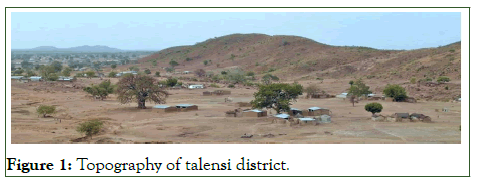
Figure 1: Topography of talensi district.
Source: Field data, 2020.
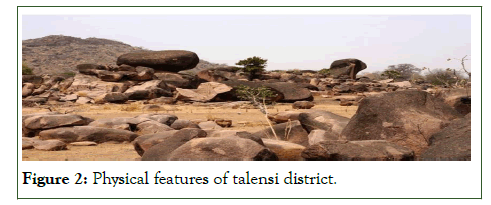
Figure 2: Physical features of talensi district.
Source: Field data, 2020.
Travel characteristics
The persons with disability 2006, act 715 states that public transportation and buildings be constructed and built to make their disability responsive. Per this act, restraints for wheelchair users, ramps, and bus lifts have been removed in urban areas to aid the mobility of PD Naetey, et al.; Kwame, et al. suggests that approximately 2000 mm is required to allow wheelchair users to access roads [18].
In the case of the Talensi district Figure 3, none of the routes had a pedestrian walkway where PD could use their wheelchair. The lack of a sidewalk puts disabled people at high risk of accidents as both shares the same road with vehicles. The lack of a pedestrian walkway has made it difficult for people with physical disabilities to move freely. Roads in various communities were unmetered and unfit for use. The roadsides have deep pits that threaten the mobility of people with disabilities. For example, during the interview, one of the respondents from Yikpemeri stated [19].
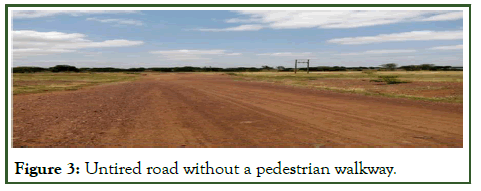
Figure 3: Untired road without a pedestrian walkway.
Source: Field survey, 2020.
"Moving outside my home is a difficult task for me, especially passing down the road to the town." The cars are just passing by, and if I don't take care, I might get hit by one. They have not cleared the pedestrian path for us to use on the road. I'm not sure whether to drive on the left or right side of the road. Some drivers and motorcycle riders honk their horns to warn me that I am driving on the wrong side of the road. I always find it difficult to go to town when I have something to do there."
Another respondent stated, "We are afraid of using the road because there is no pedestrian walkway. On my way home one night, a car hit one of the natives of this village and died, this kept me from moving out, especially at night. This is how I prefer to spend my time at home. I will not risk my life unless there is a child to lead me."
Building entrances
One of the factors impeding mobility is the entrance to the homes Ash, et al.; Clarke, et al. concluded that wheelchair users have a difficult time moving around both inside and outside of their homes. Bigonnesse, et al. research show that barriers such as narrow walkways and narrow checkout points reduced mobility. Ansah, et al. stated that most planners and contractors do not take disabled people into account when planning and building infrastructure. However, Jackson, et al. concluded that most urban buildings are disability responsive.
In the case of the Talensi district, most of the houses did not have ramps to aid the mobility of PD. The presence of an indigenous staircase without a handrail and smaller gates affects wheelchair users [20]. The entrances of the houses are small, and the door handles were above the reach of wheelchair users. The corridors were below five meters making it difficult for wheelchair users to move around. For example, during the interview, one of the respondents stated, "Because of this corridor, I am unable to leave and venture outside."
Another respondent stated, "returning to this compound will be difficult due to some small corridors and entrances." If I don't get a child to push me from behind, it's difficult for me, which is stressful and upsetting, so you'll always see me sitting here (Figures 4 and 5).
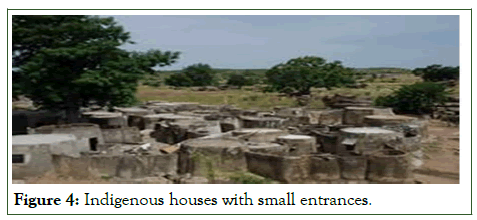
Figure 4: Indigenous houses with small entrances.
Source: Field survey, 2020.
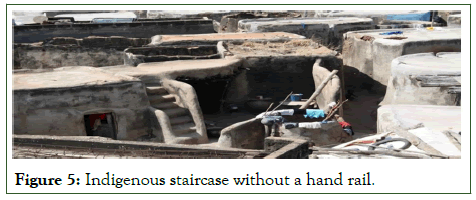
Figure 5: Indigenous staircase without a hand rail.
Source: Field survey, 2020.
Conclusion
This study sought to provide an understanding of the mobility barriers among persons with physical disabilities in the rural Talensi district. The geological features of the district, consisting of stones, rocks, valleys, hills, and slopes, have made maneuvering extremely difficult for people with disabilities. The built environment, such as small entrances and bad roads, and high ramps have created mobility barriers for PD. The presence of native stairs and smaller gates forced people with PD to park their wheelchairs outside their homes. The lack of a sidewalk puts both disabled and non-disabled people at high risk of accidents as both shares the same road with vehicles. The absence of a pedestrian walkway has made it difficult for people with physical disabilities to move freely. Roads in various communities are unfit for use. The roadsides have deep pits that threaten the mobility of people with disabilities. Future research should examine the planning response to mobility obstacles in the Talensi district. The study recommended that rural homes and roads be designed and built to make them disabilities responsive. The government of Ghana through its agencies and departments should ensure that the provisions made in the persons with disability Act 2006 are executed.
Declaration of Interest
The authors affirm that they have no conflict of interest that would have unjustifiably impacted their authoring of this work.
Funding
The cost of undertaking this research was borne by the authors and as such has no potential of adversely influencing the article's content.
References
- Agyeman LO. Understanding the causes and dynamics of conflicts in Ghana: Insights from bawku traditional area. Ghana J Dev Stud. 2021;18(2):97-116.
- Agyeman LO, Owusu-Ansah JK, Ayeltige M. Development implications of chieftaincy conflicts in bawku traditional area, Ghana. Int J Sustainable Develop Res. 2022;8(2):92-98.
- Alquraini T. Special education in Saudi Arabia: Challenges, perspectives, future possibilities. Int J Spec Educ. 2010;25(3):139-147.
- Andoh RP, Kumedzro F, Nketsiaba RK. Accommodation of students with physical disabilities in face to face based distance education in Ghana. High Educ Res Dev. 2022;41(7):2155-2169.
- Ansah SK, Owusu K. State of public buildings in Ghana after the passage of the persons with disability act (act 715): The case of tertiary institutions. J Constr Project Manag Innov. 2012;2(2):448-463.
- Asante LA, Sasu A. The persons with disability act, 2006 (act 715) of the republic of Ghana: The law, omissions and recommendations. JL Pol'y Glob. 2015;36:62.
- Ashigbi EK, Torgbenu EL, Danso AK, Tudzi EP. Mobility challenges of persons with disabilities at a university in Ghana. J Disabil Stud. 2017;3(1):8-14.
- Bigonnesse C, Mahmood A, Chaudhury H, Mortenson WB, Miller WC, Martin Ginis KA. The role of neighborhood physical environment on mobility and social participation among people using mobility assistive technology. Disabil Soc. 2018;33(6):866-893.
- Braun AM, Naami A. Access to higher education in Ghana: Examining experiences through the lens of students with mobility disabilities. Int J Disabil Dev Educ. 2021;68(1):95-115.
- Brownson RC, Baker EA, Housemann RA, Brennan LK, Bacak SJ. Environmental and policy determinants of physical activity in the United States. Am J Public Health. 2001;91(12):1995-2003.
[Crossref] [Google Scholar] [PubMed]
- Casper M. A definition of social environment. Am J Public Health. 2001;91(3):465-470.
[Crossref] [Google Scholar] [PubMed]
- Chiu TY, Yen CF, Chou CH, Lin JD, Hwang AW, Liao HF, et al. Development of traditional Chinese version of world health organization disability assessment schedule 2.0 36-item (WHODAS 2.0) in Taiwan: Validity and reliability analyses. Res Dev Disabil. 2014;35(11):2812-2820.
[Crossref] [Google Scholar] [PubMed]
- Clarke P, Ailshire JA, Lantz P. Urban built environments and trajectories of mobility disability: Findings from a national sample of community-dwelling American adults (1986-2001). Soc Sci Med. 2009;69(6):964-970.
[Crossref] [Google Scholar] [PubMed]
- Dassah E, Aldersey HM, McColl MA, Davison C. ‘When I don't have money to buy the drugs, I just manage.’-Exploring the lived experience of persons with physical disabilities in accessing primary health care services in rural Ghana. Soc Sci Med. 2018;214:83-90.
[Crossref] [Google Scholar] [PubMed]
- Eleweke CJ. A review of the challenges of achieving the goals in the African Plan of Action for people with disabilities in Nigeria. Disabil Soc. 2013;28(3):313-323.
- Ganle JK, Otupiri E, Obeng B, Edusie AK, Ankomah A, Adanu R. Challenges women with disability face in accessing and using maternal healthcare services in Ghana: A qualitative study. PloS One. 2016;11(6):e0158361.
[Crossref] [Google Scholar] [PubMed]
- Gregorius S. Exploring narratives of education: Disabled young people’s experiences of educational institutions in Ghana. Disabil Soc. 2016;31(3):322-38.
- Kassah AK. Begging as work: A study of people with mobility difficulties in Accra, Ghana. Disabil Soc. 2008;23(2):163-170.
- Mahmood A, Chaudhury H, Michael YL, Campo M, Hay K, Sarte A. A photovoice documentation of the role of neighborhood physical and social environments in older adults’ physical activity in two metropolitan areas in North America. Soc Sci Med. 2012;74(8):1180-1192.
[Crossref] [Google Scholar] [PubMed]
- Moore K, McDonald P, Bartlett J. Emerging trends affecting future employment opportunities for people with intellectual disability: The case of a large retail organisation. J Intellect Dev Disabil. 2018;43(3):328-338.
Citation: Agyeman LO (2023) Mobility as a Basic Human Right: A Situated Understanding of Mobility among Persons with Physical Disabilities in Rural Talensi District, Ghana. Intel Prop Rights. 11:226.
Copyright: © 2023 Agyeman LO. This is an open access article distributed under the terms of the Creative Commons Attribution License, which permits unrestricted use, distribution, and reproduction in any medium, provided the original author and source are credited.
